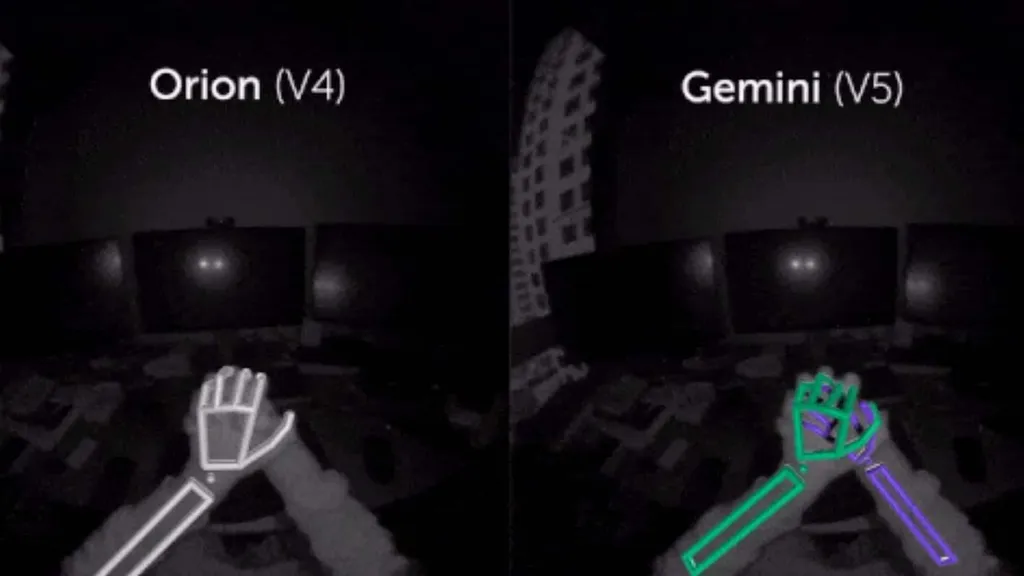Ultraleap has shared a developer preview of Gemini, the fifth generation of its hand tracking software, claiming improved performance with two-handed interactions.
Ultraleap says that it rewrote its tracking engine “from the ground up” for Gemini, which will allow increased flexibility and compatibility with different types of hardware and platforms. The Gemini software will be integrated in the Varjo VR-3 and XR-3 headsets. Back in September last year, Qualcomm announced that Ultraleap’s Gemini software would also be implemented into the Qualcomm XR2 reference design.
A common problem with hand tracking technology is decreased performance when both hands are placed in closed proximity to each other. Having both hands interact and touch with each other increases the complexity of the hand tracking and will often give unreliable results or partial tracking for one or both hands. A good example of this is the hand tracking found in the Oculus Quest and Quest 2 — while often reliable, it will easily get confused when both hands interact with each other.
We know reducing friction for end users unlocks enterprise use-cases. Gemini’s improved robustness means you can easily use both hands together.
It enables more natural and immersive interaction with virtual objects and new wearable menus 😎 pic.twitter.com/bfpAdd4Wz8
— Ultraleap Developers (@ultraleap_devs) January 27, 2021
Ultraleap claims to offer “significantly better performance with two-hand interactions” with its Gemini software — a claim that it backed up with an accompanying video, embedded in the tweet above.
It also claims that Gemini will offer “even better smoothness, pose fidelity, and robustness” along with “improved hand initialization.”
You can read more about the Gemini Developer Preview and sign up to test the preview release here. The preview release will only be available on Windows 10, but Ultraleap says support for additional platforms will be added in later releases.


























